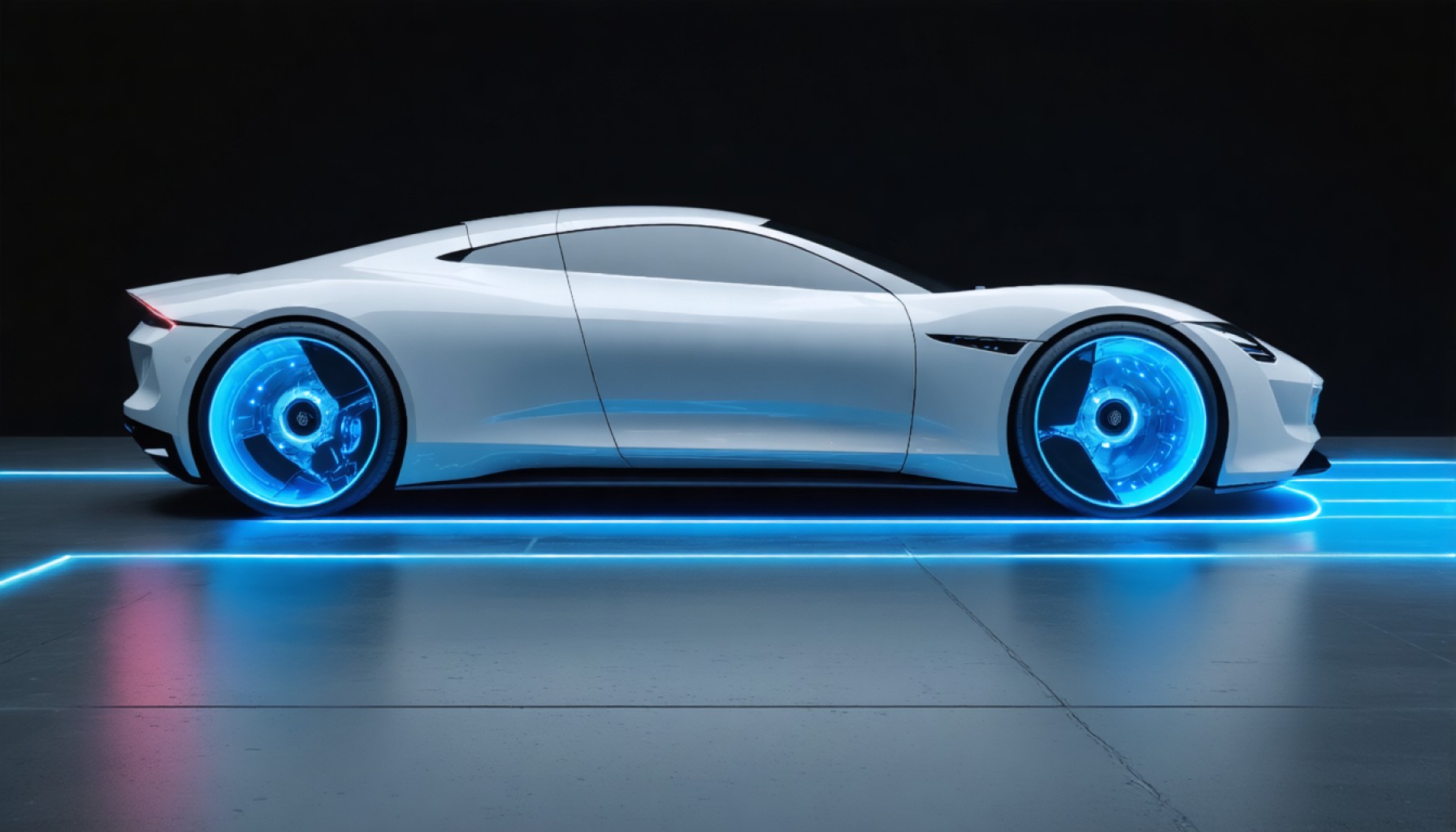- BYD has launched a revolutionary battery charging technology, the Super E-Platform, enabling an EV driving range of 470 kilometres (292 miles) in just five minutes.
- The Super E-Platform offers unprecedented charging speeds of up to 1000kW, far surpassing the current market maximums of around 350kW.
- The first models showcasing this technology are the Han L saloon and Tang L SUV, featuring powerful motors and advanced lithium iron phosphate batteries.
- Despite the innovation, infrastructure remains a limitation, with most public chargers unable to support 1MW charging, but BYD plans to expand with 4000 ultra-fast stations in China.
- Australia currently lacks enough charging stations to utilise this technology, which may delay introduction there.
- BYD’s advances could transform EV charging speed to rival traditional refuelling, making electric vehicles more appealing globally.
Amidst the bustling streets of Beijing and the sprawling highways of Shanghai, a silent revolution is underway. Chinese automaker BYD has unveiled a groundbreaking innovation that promises to reshape the electric vehicle (EV) landscape—an eye-popping leap in battery charging technology that can inject 470 kilometres (292 miles) of driving range in a mere five minutes.
Picture this: You pull into a sleek, futuristic charging station, and before you can finish your coffee, your vehicle is supercharged with enough power to take on a long journey once unthinkable in such a short amount of time. This is no far-fetched sci-fi dream; this is the reality set forth by BYD’s Super E-Platform, an engineering marvel offering charging speeds of up to 1000kW. This breakthrough essentially means more than one kilometre of range gained per second of charging—a staggering achievement that eclipses the current norms in EV technology.
While most existing EVs on the market, like the Hyundai Ioniq 5 and Porsche Taycan, max out at charging speeds of around 350kW, BYD’s new technology vaults far ahead. Currently, BYD vehicles like the Seal, available in Australia, are designed to handle a maximum of 150kW—a fraction of what the new platform can potentially offer.
Yet, as promising as BYD’s supercharging future appears, the path forward is paved with challenges. Today, the vast majority of public EV chargers cannot support the might of 1MW power. Recognising this limitation, BYD plans an ambitious expansion, envisioning over 4000 ultra-fast charging stations dotting China’s horizon.
The pioneering models leading this charge are the Han L saloon and the Tang L SUV. The Han L, a sleek machine brimming with innovation, houses a formidable 500kW rear motor complemented by an 83.2kWh lithium iron phosphate (LFP) battery. Its high-performance variant, boasting all-wheel drive and a breathtaking 810kW burst of power, propels this saloon from 0 to 100km/h in a jaw-dropping 2.7 seconds.
Meanwhile, the muscular Tang L SUV, with its expansive 100.5kWh battery, enters the market as a heavyweight contender in capability and design.
However, for those residing Down Under in Australia, the wait for this cutting-edge innovation might linger, as current infrastructure is yet to catch up. Presently, the nation hosts fewer than 40 capable stations, which pale in comparison to BYD’s new 1MW standard.
In the grand tapestry of automotive progress, BYD’s breakthrough stands as a beacon of what the future holds—a world where charging an electric car might one day rival the swift efficiency of refuelling a traditional petrol vehicle. If these technological leaps become a fixture on global highways, the decision to embrace the electric future becomes not just feasible but invitingly easy.
In this dance of technological prowess, BYD invites us to imagine a future where the constraints of yesterday are left in the rearview mirror—a tantalising glimpse of what could be, in a world driven by electrons rather than petrol.
Revolutionary BYD EV Chargers: Transforming the Future of Electric Mobility
Introduction
The electric vehicle (EV) industry is witnessing a monumental shift, driven by Chinese automaker BYD’s unveiling of a rapid charging technology that charges 470 kilometres (292 miles) of range in just five minutes. This innovation has the potential to revolutionise how we perceive electric mobility and usability. With the launch of the Super E-Platform, BYD significantly leaps ahead, offering charging speeds up to 1000kW—an extraordinary advancement compared to current EV standards.
Key Features and Specifications
1. Super E-Platform Technology: BYD’s new technology offers charging capabilities that dramatically reduce waiting times, providing over one kilometre per second of charging.
2. Leading Models:
– Han L Saloon: Features a 500kW rear motor with an 83.2kWh lithium iron phosphate (LFP) battery.
– Tang L SUV: Equipped with a 100.5kWh battery, designed to provide robust performance.
3. Charging Infrastructure: Currently, few public charging stations can harness the 1MW power requirement. BYD plans to expand by establishing over 4000 ultra-fast charging stations across China to meet demand.
How to Leverage BYD’s Breakthrough for a Sustainable Future
1. Develop Charging Infrastructure: Stakeholders should prioritise infrastructure development to support the new EV charging standards.
2. Policy and Incentives: Governments should consider providing incentives for companies like BYD to establish charging stations, making electric driving more accessible.
3. Consumer Education: Raise awareness and educate consumers about the advantages of BYD’s new technology and the environmental benefits of switching to EVs.
Real-World Use Cases and Industry Trends
– The speed and convenience of BYD’s charging technology make EVs a practical option for long-distance travellers, potentially rivalling traditional petrol vehicles in terms of refuelling time.
– Possibility for other automakers to innovate and adopt similar technologies, promoting industry-wide progress.
Challenges and Limitations
– Infrastructure Development: Implementing the necessary charging infrastructure worldwide will require time and investment.
– Adoption Rates: Mass adoption may slow due to the need for early infrastructure upgrades and consumer readiness.
Market Forecasts and Predictions
– Growth in EV Market: As the technology becomes more prevalent, expect significant growth in the global EV market share by 2030.
– Collaborations: Anticipate strategic partnerships between automotive firms and energy providers to push forward ultra-fast charging technologies.
Recommended Actions for Potential Buyers
1. Stay Informed: Keep abreast of the latest advancements in charging technology and new BYD vehicle releases.
2. Evaluate Current Infrastructure: Before purchase, ensure there’s adequate charging infrastructure in your region or plans for expansion.
3. Consider Future Needs: Evaluate how this charging technology might fit into your lifestyle, especially if you enjoy long-distance travel.
Conclusion
BYD’s groundbreaking advancements mark a pivotal moment for the EV industry by transforming the landscape of vehicle charging. As charging becomes faster and more accessible, widespread EV adoption is not just possible but imminent. Embrace the change, prepare for the future, and stay updated on evolving trends to make informed choices in this rapidly progressing automotive landscape.
For more information about the future of electric vehicles, check out the BYD website.







